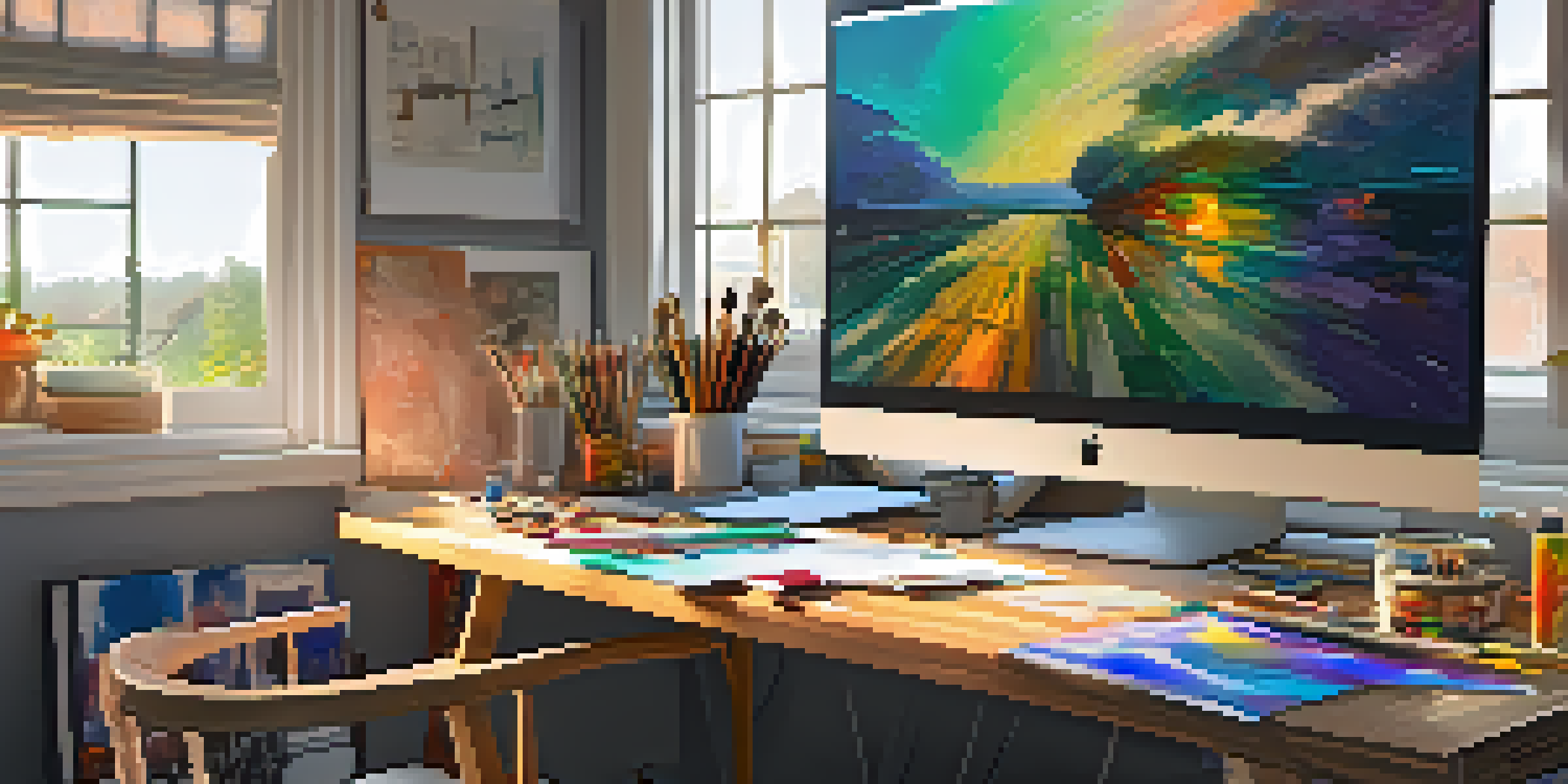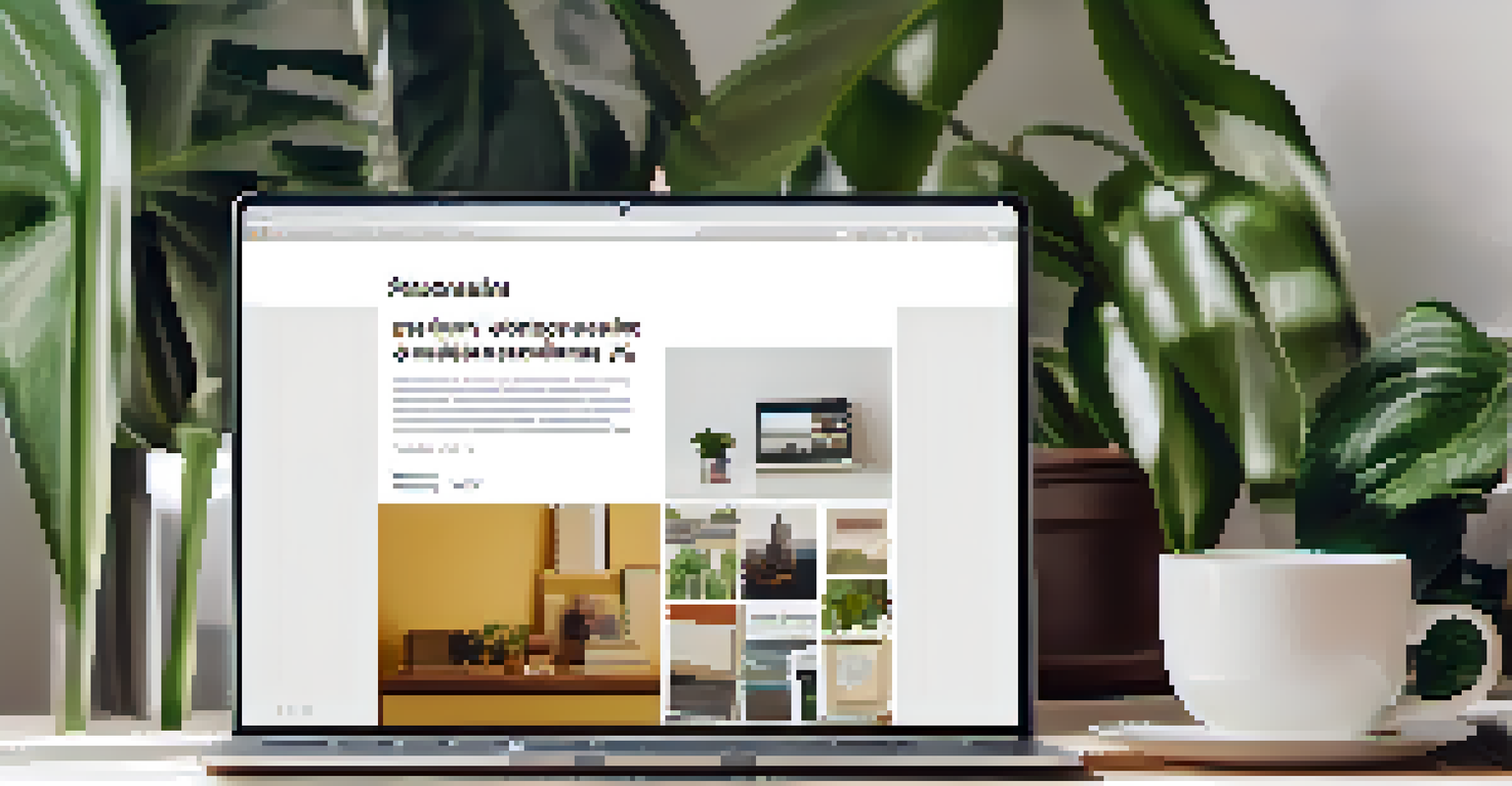Creating a Digital Portfolio: Carving Artists' Guide

Understanding the Importance of a Digital Portfolio
In today’s digital age, a portfolio is your calling card as an artist. It’s not just a collection of your work; it’s a reflection of your style, skills, and personality. A well-crafted digital portfolio can open doors to new opportunities and connections in the art world.
Your portfolio is a reflection of your personality and skills; it’s not just about the art but the story behind it.
Think of it as your online exhibition space, available 24/7 to potential clients, galleries, and art enthusiasts. Unlike traditional portfolios, digital versions allow for interactive elements, making your art more engaging. This accessibility can significantly enhance your visibility and marketability.
Moreover, a digital portfolio can be easily updated as you create new pieces, ensuring that your best work is always on display. In contrast to physical portfolios, which can become outdated quickly, digital solutions offer flexibility and convenience that every artist should embrace.
Choosing the Right Platform for Your Portfolio
Selecting the right platform is crucial to showcasing your work effectively. There are numerous online portfolio builders, each with its features, so it’s essential to choose one that aligns with your artistic vision. Options like Adobe Portfolio, Behance, and Squarespace offer varying degrees of customization and ease of use.

When considering a platform, think about what features are most important to you. Do you need a blog to share your process? Or perhaps e-commerce capabilities to sell your work directly? Take time to explore different platforms and even try a few to see which one feels right for you.
Importance of a Digital Portfolio
A digital portfolio acts as your online exhibition space, showcasing your skills and enhancing visibility in the art world.
Don’t forget to consider aspects like mobile responsiveness and SEO features. A platform that is easy to navigate and looks great on all devices will enhance user experience, keeping visitors engaged with your art longer.
Crafting a Memorable First Impression
Your portfolio should tell a story from the moment someone clicks on it. The first impression counts, so ensure your homepage is visually striking and reflects your artistic style. High-quality images, a clean layout, and an inviting color scheme can draw viewers in and encourage them to explore further.
In the world of art, visibility is key; your digital portfolio is your stage, so make sure it shines.
Consider including an artist statement or a brief introduction to give context to your work. This helps visitors understand your artistic journey and intentions, creating a personal connection. Think of it as inviting someone into your studio; you want them to feel welcomed and intrigued.
Additionally, make sure your navigation is intuitive. Visitors should easily find what they are looking for, whether it’s a specific collection, your biography, or contact information. A seamless experience keeps viewers engaged and more likely to return.
Selecting and Showcasing Your Best Work
Quality over quantity is the mantra when it comes to selecting pieces for your portfolio. Aim to showcase your best work that highlights your skills and versatility as an artist. A curated selection that demonstrates your range can leave a lasting impression on viewers.
Consider grouping your work into categories or themes. This not only helps in showcasing your versatility but also makes it easier for viewers to navigate through your portfolio. For example, you might have sections for paintings, illustrations, and mixed media.
Choosing the Right Platform
Selecting a platform that aligns with your needs and provides features like mobile responsiveness and SEO can significantly impact your portfolio's effectiveness.
Remember to provide context for each piece, such as titles, dimensions, and the medium used. Including a brief description can also enhance the viewer's understanding and appreciation of your work, making it more memorable.
Incorporating Personal Branding Elements
Your digital portfolio is an extension of your personal brand, so it’s important to incorporate elements that convey your unique identity as an artist. This could include a consistent color palette, typography, and logo that reflect your style and personality. These elements will help create a cohesive look and feel across your portfolio.
Consider adding a professional photograph of yourself to reinforce your brand. When people see the face behind the art, it adds a personal touch, making your work more relatable. It’s like putting a face to the name; it fosters a connection that can resonate with viewers.
Don’t forget to include links to your social media profiles. This can help followers engage with you on multiple platforms and stay updated on your latest projects. Just ensure that your online presence is consistent across all channels to strengthen your brand.
Optimizing for Search Engines and Visibility
Creating a beautiful portfolio is just the first step; you also need to ensure it’s discoverable. Search engine optimization (SEO) is crucial for increasing your portfolio's visibility online. This involves using relevant keywords in your titles, descriptions, and image alt texts.
Think about what potential clients or art lovers might search for when looking for work like yours. Incorporating these keywords naturally into your content can help improve your ranking on search engines, leading to more visitors to your portfolio.
Regular Updates are Essential
Maintaining and updating your portfolio regularly ensures it reflects your current work and keeps visitors engaged.
Moreover, consider starting a blog where you share insights about your artistic process, upcoming projects, or thoughts on the art world. Regularly updated content can enhance your SEO efforts and provide fresh, engaging material for your audience.
Maintaining and Updating Your Portfolio Regularly
A digital portfolio is not a set-it-and-forget-it tool; it requires ongoing maintenance and updates. Regularly adding new works and removing older pieces ensures that your portfolio reflects your current style and skills. This shows potential clients that you’re active and evolving as an artist.
Set a schedule for updates—perhaps quarterly or after major projects—so you stay organized and committed to keeping your portfolio fresh. This could also be a great time to tweak your layout or design to keep things visually interesting.

Additionally, keep an eye on the analytics of your portfolio. Understanding how visitors interact with your site can provide valuable insights into what works and what doesn’t, allowing you to make informed adjustments to enhance user experience.